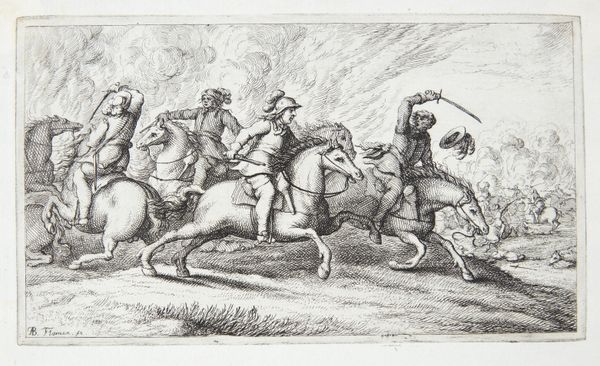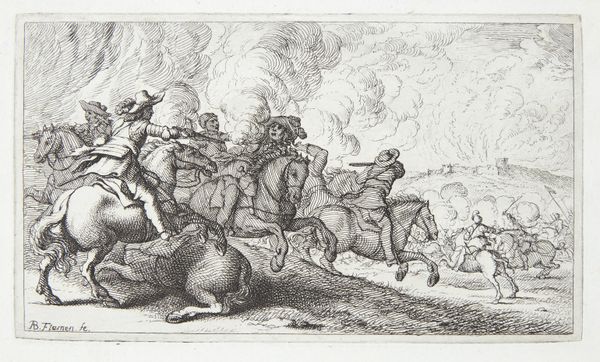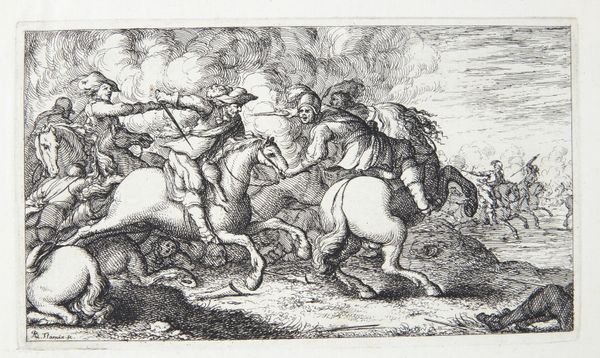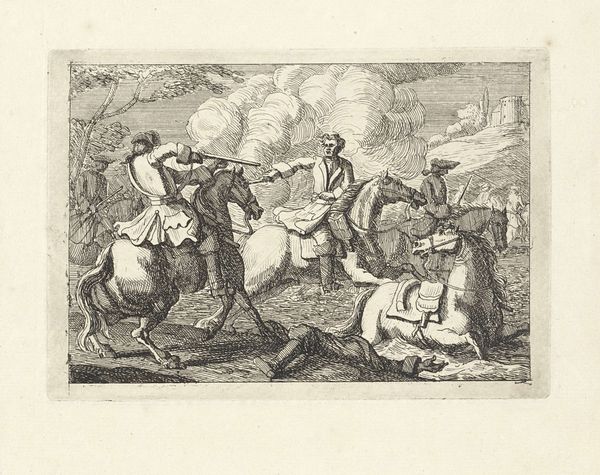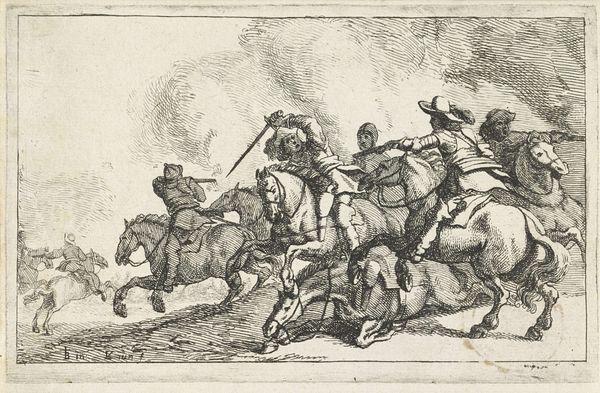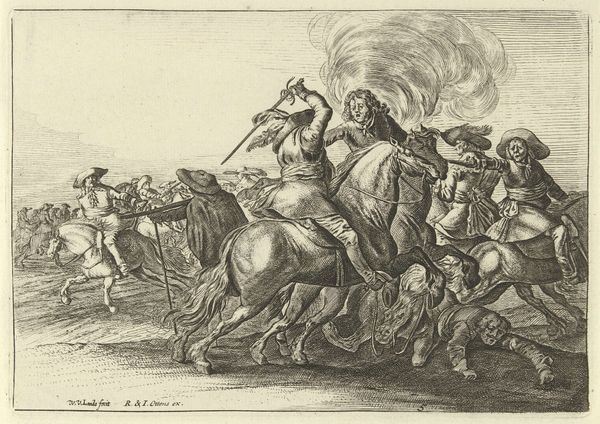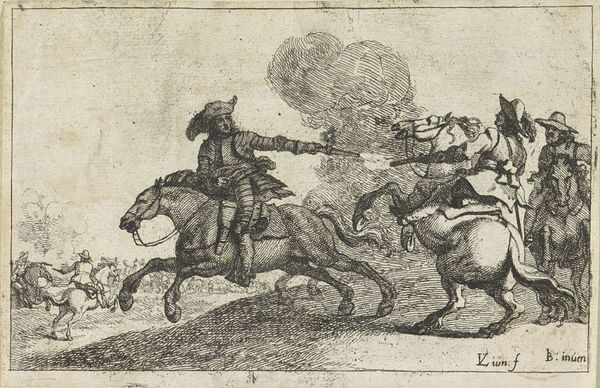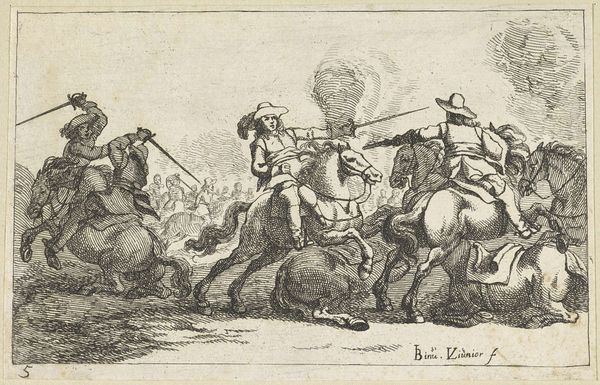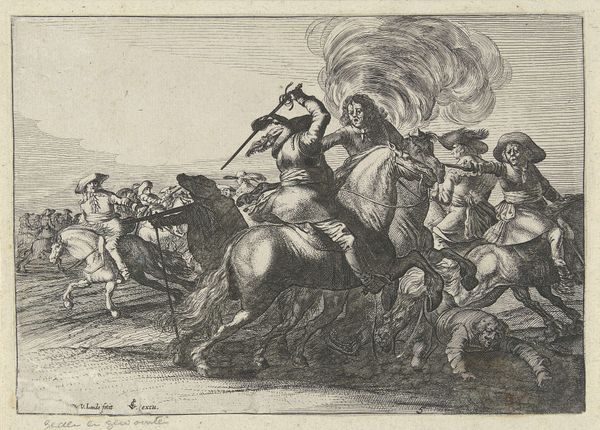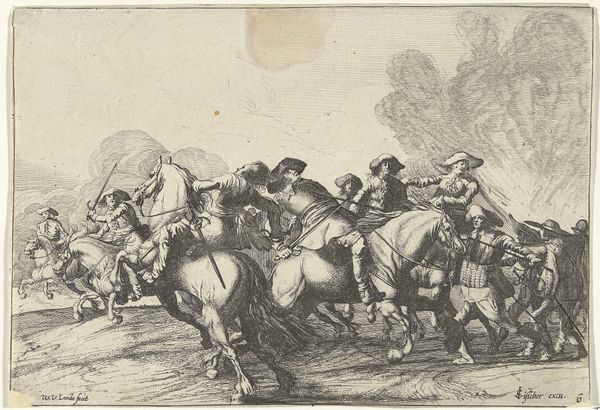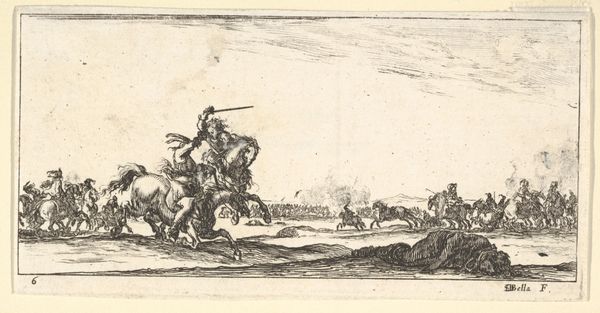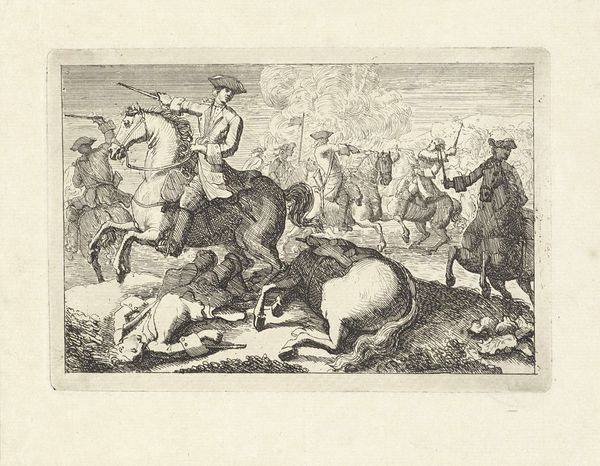
print, etching
#
baroque
# print
#
etching
#
genre-painting
#
history-painting
Dimensions: 99 mm (height) x 172 mm (width) (plademaal)
Curator: This print, attributed to Albert Flamen and created sometime between 1620 and 1669, is titled "Rytter uden hjelm angriber en fjende," which translates to "Rider without Helmet Attacks an Enemy." Editor: What strikes me first is its chaotic energy. The swirling lines create a sense of movement, almost overwhelming the figures. There's a tension that transcends mere battle depiction. Curator: Absolutely. It's a baroque etching, which lends itself to intricate detail and dynamic composition. Think about the technical skill required to achieve this level of detail through printmaking; the labor involved to get to a single print is considerable, and it implies this could be distributed widely for consumption. Editor: And who exactly consumed images like this, right? What was the socio-political climate enabling it, and what ideological narratives are subtly reinforced? Are we meant to admire the "heroic" rider attacking his foe? Consider whose perspectives are centered and marginalized within such violent scenes. Curator: I’d imagine the image, and others like it, found a receptive audience amongst a patron class seeking glorification of martial strength. It taps into a worldview where battle is spectacle, the rendering is refined and the resulting image, whether hung or collected in an album, served as luxury. Editor: True, but it also invites us to interrogate this glorification itself. Is this about preserving an established order, using these displays of dominance as both propaganda and entertainment? It reminds us of the human cost masked behind ideals of chivalry or heroism. Curator: One way of addressing such an erasure might involve exploring not just this individual print, but the career of Flamen and of other printmakers; how prints depicting battles or landscapes became associated with specific patrons, networks, and socio-economic contexts. Editor: Right. Contextualizing within those power structures becomes paramount, not merely understanding the 'who' but unpacking the 'why' and ‘for whom’ associated with its existence and display. Thinking through that consumption, who was armed with such views? Curator: Considering this print, alongside related works, also allows us to investigate and understand broader economic networks related to print production at this time; its circulation also speaks to a network of skilled labor that involved multiple players in its making, from design to distribution. Editor: It's a reminder of how deeply intertwined art is with society, with power dynamics and historical narratives that continue to shape us today. This image asks questions that have not been silenced by the passing of time.
Comments
No comments
Be the first to comment and join the conversation on the ultimate creative platform.
